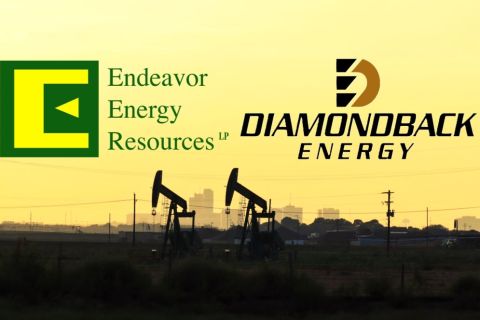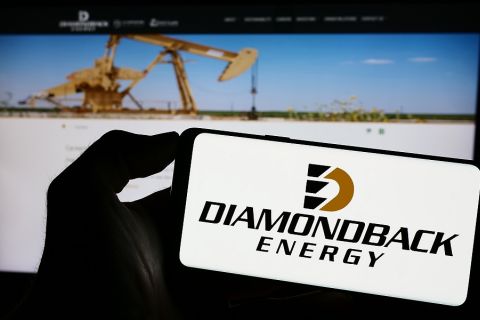Private equity is coming back to the upstream sector, perhaps with as much as $15 billion raised this year. But that drop in the bucket is dramatically outweighed by the forecasted market supply needed to prevent a shortfall, which amounts to $4.9 trillion by 2030, using the International Energy Forum’s math.
Meanwhile, private E&P companies are being swallowed whole by large public companies. It’s the law of the jungle. The early pattern of private equity model in U.S. shale was to buy assets, prove them up and then cash out within two years.
But around 2017, shareholders rebelled against the growth-for-growth’s sake strategy. The paradigm shifted. And then, the pandemic punched everyone in the gut. M&A and everything else slowed down.
Well, now it’s bouncing back and raising questions.
Consolidation is quickening its pace after closing out a 2022 that functioned in fits and starts.
Diamondback Energy wrapped the year by consolidating with two private companies in a combined $3.3 billion spend. In November, the Permian Basin pure-play bought Lario Permian in a cash-and-stock transaction valued at $1.55 billion. The deal followed Diamondback’s acquisition of the private Permian pure-play FireBird Energy in a $1.75 billion transaction. Still, the folks behind FireBird are already back in action with FireBird Energy II.
In both deals, Diamondback immediately tapped the brakes on drilling activity, reducing cumulative rigs on the Lario and FireBird positions from five rigs to two to preserve inventory.
David Deckelbaum, an analyst at Cowen, told Hart Energy that Lario’s drilling program would have depleted its inventory in about four years. At Diamondback’s pace, that inventory will stretch to six years.
Similarly, FireBird’s inventory stretches out to 12 years in drilling activity as Diamondback will reduce rigs operated there from three to one.
Essentially, Diamondback added two total incremental years of company-wide inventory, Deckelbaum said.
Marathon Oil doubled its position in the South Texas Eagle Ford Shale with a $3 billion deal in November when the firm acquired privately held Ensign Natural Resources.
Marathon wanted to build its position the South Texas Eagle Ford Shale and Ensign’s assets fit the bill described by the public company’s CEO Lee Tillman, uniquely striking the right balance between immediate cash flow accretion and future development opportunity.
Ovintiv’s $4.2 billion deal in April took out three private producers with its acquisition of EnCap Investments’ portfolio companies—Black Swan Oil and Gas, PetroLegacy Energy and Piedra Resources.
There are a few ways to look at this activity: private investment is trickling back into the upstream side of the industry; demand is expected to increase well into the future; despite the best efforts of the “keep it in the ground” crowd, oil and gas clearly has a place in the energy transition.
Does it all amount to an industry win—or the wind-up to a new set of concerns?
I’ve posed this question to a few well-placed folks who also seem to get a kick out of creating their own angst: What happens if the stable of successful private operators—that currently produces close to 40% of U.S. supply—is absorbed by its large, public peers, and there’s not enough money flowing into the E&P space to replace it?
Certainly, public producers engage in their own research and development, and they have the prowess to re-risk up-and-coming plays. But they have largely depended on the M&A paradigm for both issues. Most public companies buy their next round of inventory; apart perhaps from EOG Resources and a few others, organic growth isn’t the model that public E&Ps use to increase production.
In recent months, upstream executives and bankers alike have been wringing their hands over depleted resources and declining inventory. If the big brains at investment group and advisory firms are correct—and there is an insufficient increase in development capital on the horizon—can the largest producers, which are not the nimblest bunch, pivot?
This could mean recruiting staff to do the work of a private portfolio company. That could be a challenge, given that much of the next-gen sentiment largely eschews fossil fuels.
It might mean significantly greater spending in technology that may or may not be successful. Public companies have a wider audience of investors and shareholders to criticize every misstep, and it could tie their hands on further spending.
And that brings us to the crux of this line of thinking: If the best private companies are acquired, and capital raises are insufficient to replace their production, then that’s followed by a cooling effect on public companies’ growth, we could see U.S. oil and gas supply falter.
Recommended Reading
EIA: E&P Dealmaking Activity Soars to $234 Billion in ‘23
2024-03-19 - Oil and gas E&Ps spent a collective $234 billion on corporate M&A and asset acquisitions in 2023, the most in more than a decade, the U.S. Energy Information Administration reported.
Analysts: Diamondback-Endeavor Deal Creates New Permian Super Independent
2024-02-12 - The tie-up between Diamondback Energy and Endeavor Energy—two of the Permian’s top oil producers—is expected to create a new “super-independent” E&P with a market value north of $50 billion.
Diamondback Energy to Acquire Permian’s Endeavor for $26B
2024-02-11 - Diamondback Energy will acquire Endeavor Energy in a cash-and-stock agreement that will create a Permian juggernaut with a combined value of more than $52 billion in a merger of near equals.
Dallas Fed Energy Survey: Permian Basin Breakeven Costs Moving Up
2024-03-28 - Breakeven costs in America’s hottest oil play continue to rise, but crude producers are still making money, according to the first-quarter Dallas Fed Energy Survey. The situation is more dire for natural gas producers.
ConocoPhillips CEO Ryan Lance: Upstream M&A Wave ‘Not Done’ Yet
2024-03-19 - Dealmaking in the upstream oil and gas industry totaled $234 billion in 2023. The trend shows no signs of slowing, ConocoPhillips CEO Ryan Lance said at the CERAWeek by S&P Global conference.





